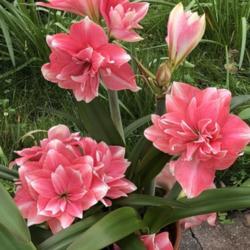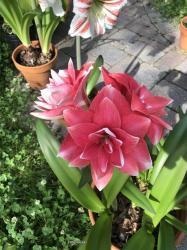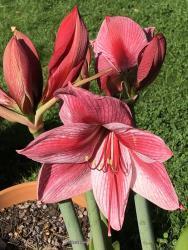https://www.hortmag.com/weekly...
Q&A: What's the best way to care for the amaryllis bulb I received as a gift?
Categories: Q&A, Weekly Tips | Tags: Q&A
December 11, 2009 | mgodfrey
Pin It
Few plants can equal these bulbs for the splash of color they produce, or are as easy to rebloom. Interestingly, the standard technique of allowing the bulbs to grow on through the summer and then drying them off until winter does not usually produce the best floral display. Much better results can be obtained by potting on the bulb as the roots grow and keeping the plants in active growth as long as possible.
Pot up the dormant bulbs in a light, humus-rich potting mix in a pot about two inches wider than the diameter of the bulb. Be careful not to bury the "neck" of the bulb; the top third of the bulb should remain above the soil. Keep the soil moist but not wet, and don't let the temperature fall much below 65 degrees F. When growth has begun and the pot has filled with roots, transfer the bulb to a pot four inches wider than the diameter of the bulb. (Do not transplant the bulb while it is flowering, however.) Feed every two weeks with a liquid fertilizer at one-half the recommended strength. When the new pot is filled with roots, move the bulb to yet a third container at least 11 to 12 inches in diameter. As soon as the weather has warmed, set the pot outside in full sun for the summer. Never allow the soil to dry out, and continue fertilizing until the middle or end of August. The plants may be left outside until frost threatens; at that point, move them to a sunny window. By this point, the plant will probably look a bit tattered; the leaves may die off by late December. NEVERTHELESS, DO NOT LET THE PLANTS DRY OUT.. In late January the flower spikes will begin to appear.
Vigorously growing bulbs will produce offshoots that can be detached and potted up; these will take at least two years to reach flowering size.
Remember: for the bulb to produce multiple flower stalks, it must be encouraged to produce as many leaves as possible. In order to put on a spectacular display, the bulb must produce an abundance of food—a process that requires full sun, regular feeding, ample root room and adequate moisture.



